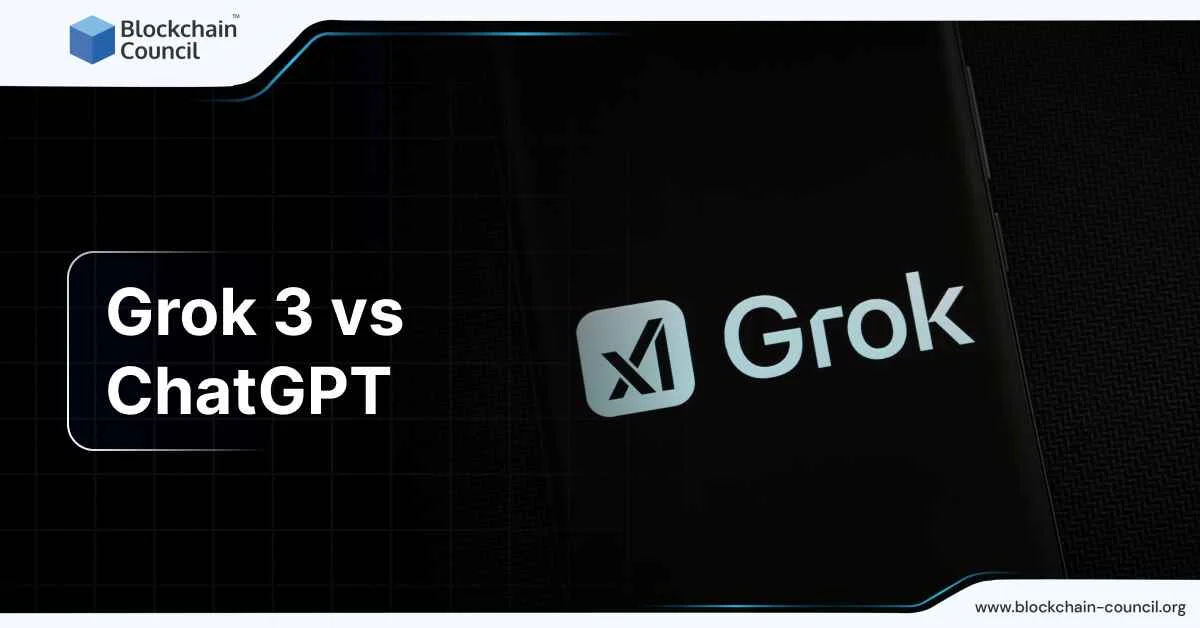
- Blockchain Council
- June 06, 2023
Summary:
- Write clear and concise prompts with short, understandable sentences. Avoid lengthy sentences with multiple sub-points.
- Include relevant context and specific information in your prompts. Provide necessary details for accurate and context-aware responses.
- Use easily understandable words to aid the model's interpretation. Avoid jargon, technical terms, or slang that may hinder understanding.
- Ask specific, targeted questions instead of simple "yes" or "no" inquiries. Specific inquiries yield more relevant and insightful answers.
- Articulate clear tasks or questions with proper instructions. Explicit instructions enhance the model's understanding and accuracy.
- Choose precise and accurate keywords that align with the question or task. Keywords guide the model toward generating more relevant responses.
- Infuse prompts with creativity to stimulate imaginative and engaging conversations. Explore unique angles, thought-provoking scenarios, or hypothetical situations.
- Use tabular form for responses when applicable (e.g., organizing meal ideas, game concepts). Follow-up prompts can modify and format tables to meet specific requirements.
- Prompt the model to respond in the style of your favorite authors. Explore different writing styles to make the output more engaging and interesting.
- Limit responses to a certain word count or the number of paragraphs. Imposing restrictions can provide more focused and precise outputs.
- Customize responses based on the intended audience (e.g., children, entrepreneurs). Specify the audience to shape the tone and content of the generated responses.
- Share relevant data or references at the beginning of the prompt. Providing necessary background information enables more accurate responses.
- Include examples within prompts to guide the model's understanding. Examples are valuable for tasks involving calculations, coding, or chat-based interactions.
- Communicate the desired output format (e.g., Python code, HTML, charts). Specify the format requirements to receive responses in the desired format.
- Use expressions like "Let's think step by step" or "Thinking backward" to guide the model's reasoning. Specify the writing style or provide a contextual framework for the AI's knowledge.
- Prompt generator tools automate the creation of effective chatbot prompts. Tools like Hugging Face, OpenAI, and GPT-3 provide convenient interfaces for generating prompts.
- Have a clear understanding of your target audience's preferences and language proficiency. Tailor prompts to resonate with users and provide a personalized experience.
- Regularly test and refine prompts based on user feedback and chatbot interactions. Experiment with different prompts to find the most engaging and accurate responses.
- Continuously monitor chatbot performance using user engagement, response accuracy, and customer satisfaction metrics. Analyze data to measure the impact of prompts and identify areas for optimization.
- Consider ethical concerns surrounding prompt engineering and AI use. Ensure responsible and ethical usage of AI systems to avoid potential harm or misinformation.
ChatGPT and similar AI tools have democratized access to artificial intelligence, enabling users to receive a wide range of responses on nearly any imaginable topic. These bots can generate sonnets, code snippets, philosophical insights, and more. While it is true that you can input almost anything into ChatGPT and expect it to understand, there are techniques for obtaining even more interesting and useful results from the model. This practice is known as “prompt engineering” and is becoming a specialized skill in its own right.
Adding a few extra words or providing additional instructions can elevate the quality of ChatGPT responses beyond the standard output and generate responses that can be easily compared to a professional. These modifications enable users to obtain responses that are more unique and valuable compared to what others might receive. The recent surge in AI tools has led to interest in this previously non-existent field. As more companies show interest in individuals who know prompt engineering, the demand is deemed to follow the trend. In this article, we aim to understand prompt generation and how you can generate prompts that can generate exciting results.
What are the prompts for the GPT chatbot?
Imagine ChatGPT as a marvelously intelligent virtual companion, an AI language model that harnesses the power of machine learning to craft responses that flow and resonate much like human conversation. Like a skilled conversationalist, ChatGPT utilizes meticulously designed text prompts as its springboard for generating thoughtful, imaginative, and contextually appropriate replies.
When people discovered that they could write creative prompts and generate output very different from what you get using raw words, a horde of creative people excited to use this opportunity came to the field, and a completely new job interest was born out of it.
These prompts act as the fertile soil from which ChatGPT’s linguistic blossoms bloom, allowing it to engage in meaningful dialogues and provide insightful information. ChatGPT exhibits its creative prowess with each interaction, effortlessly adapting to diverse topics and capturing the essence of human-like expression.
How to formulate a good prompt
Formulating a good prompt is simple yet needs a careful examination of the goal for which you are writing the prompt. There are some very basic rules that you can follow to write prompts that can generate results that are on par with humans.
Clarity and Precision
Ensure your prompts are clear and concise, avoiding lengthy sentences with multiple sub-points. Opt for short, easily understandable sentences that provide a precise direction for the conversation. As the goal is to generate an output that can be easily understood, the input should be written in the same way. The way generative AI models work and the clarity and precision of your prompt will have a crucial influence on the resulting output.
Context and Specificity
You have to Include relevant context and specific information when posing questions. Providing the necessary details enables ChatGPT to generate more accurate and context-aware responses. To understand this, let’s take an example. Suppose you want to generate a scene from the famous children’s novel “Harry Porter” To do that, you can’t simply write what you want to generate because the scene is defined differently in the book. Hence, you must provide the related context to generate a meaningful image.
Clearly explain the context of your question to obtain the desired information or assistance. If you deviate too much from the context, the resulting output, as tried to explain in the example, can be different.
Thoughtful Word Choice
Choose easily understandable words and aid ChatGPT in interpreting the context accurately. Avoid jargon, technical terms, or slang that might hinder the model’s grasp of the question’s intent. Employing simple and accessible language enhances the effectiveness of the prompt. You should never use slang or profanity because language filters used to ensure security will leave that part leading to a result that does not fit the description.
Avoiding Yes/No or General Questions
Steer clear of questions that can be answered with a simple “yes” or “no,” as they often result in less helpful responses. Instead, strive to ask more specific and targeted questions. The more precise your inquiry, the better ChatGPT can provide relevant and insightful answers. ChatGPT is better in cases where you need an actual explanation for a situation or a product instead of a full-blown interview. You can talk to ChatGPT for hours and not get bored, but when you try to make it a question-answer session, you will soon realize it cannot provide a satisfactory response.
Become a Certified ChatGPT Expert
What are a few things to look at while writing prompts?
The last section discussed a roadmap to help you write good prompts. This section aims to help you understand a few things you should look out for in writing prompts. If the last section was the foundation for a good prompt, this section is the mortar that will keep the prompt intact and effective.
Write instructions, not statements
When formulating prompts for ChatGPT, it is crucial to articulate a clear task or question with proper instructions. While the AI model can process incomplete or incorrect input, providing explicit instructions can greatly enhance its understanding and enable more accurate responses. By offering precise guidelines, you better empower the AI tool to fulfill the prompt’s intended purpose. By following this method, you will also ensure that the generated output is exactly how you want it from top to bottom.
The Art of Keywords
Selecting the right keywords is a vital aspect of composing effective prompts. These keywords should be carefully chosen to align with the question or task. Using precise and accurate terms enhances the AI’s ability to interpret the input correctly and generate the desired results. Choosing keywords is a roadmap, guiding ChatGPT toward providing more relevant and targeted responses.
Embrace Creativity
While adhering to clarity and precision, don’t shy away from infusing your prompts with a touch of creativity. Engaging the AI model in imaginative and inventive ways can yield surprising and insightful responses. Exploring unique angles, posing thought-provoking scenarios, or presenting hypothetical situations can stimulate the AI’s creativity, resulting in more imaginative and engaging conversations.
By incorporating these considerations into your prompts, you unleash the true potential of ChatGPT, unlocking a world of meaningful and productive interactions. From clear instructions to precise keywords and a sprinkle of creativity, each element enhances the AI’s ability to comprehend and respond in a manner that satisfies your desired objectives.
Tips for writing better prompts for ChatGPT
Now that we have discussed foundation and mortar, the time has come for the part that will make your prompt different from others and act as a decorative method to make your creation more exciting and original. These tips are easy to follow and emulate and make a difference in how others perceive them.
Tabulate Your Answers
Don’t limit yourself to plain-text responses! ChatGPT can provide information or creative ideas in tabular form. You can organize meal ideas, game concepts, language translations, and more by asking for a table. Additionally, you can use follow-up prompts to modify and format the tables to meet specific requirements, enabling seamless integration with other programs like Microsoft Excel.
Emulate Your Favorite Authors
You can escape the default tone of ChatGPT and unleash your creativity by prompting it to respond in the style of your favorite authors. Whether you try to write in the way of Shakespeare or reek the searing simplicity of Hemingway or Carver, or Dickens’s richness, ChatGPT can adopt different writing styles to make the output more engaging and interesting.
Set Boundaries for Answers
You can ask the bot to limit its answers to a certain word count or several paragraphs. You can obtain more focused and precise outputs by imposing restrictions, such as condensing information or keeping responses short. If the initial response doesn’t meet your requirements, you can guide the AI through corrections and revisions.
Tailor Responses to Your Audience
You should customize ChatGPT’s responses by specifying the intended audience. Whether you want explanations geared towards 10-year-olds or insights targeted at business entrepreneurs, informing the AI about the audience helps shape the tone and content of the generated responses. This technique is particularly useful when generating multiple outputs for different target groups while maintaining consistency in the theme or topic.
Front Load Helpful Information
When requesting personalized outputs or summaries, ensure the AI has the necessary background information upfront. Share relevant data such as resumes, articles, or transcripts at the beginning of the prompt. Providing the AI with these references enables it to directly access and utilize the provided information to generate more accurate and contextually appropriate responses.
Enhance Understanding with Examples
Including examples within prompts aids the AI in understanding the expected response format or conversation structure. Demonstrating the desired output or conversation flow guides the AI in generating responses that align with your requirements. Examples are particularly valuable in tasks involving mathematical calculations, coding, data formatting, or generating chat-based interactions.
Define Output Formats
When requesting outputs in specific formats such as code languages, visual styles, or structured data, clearly communicate the desired format to the AI. Explain the format you expect to receive, whether it’s Python code, HTML, charts, or CSVs. This ensures the AI generates responses that adhere to your specified format requirements, facilitating seamless integration with your intended use case.
Utilize Handy Expressions
Certain phrases can enhance the AI’s performance and generate more desired outcomes. Utilize expressions such as “Let’s think step by step” for logical reasoning, “Thinking backward” to rectify inaccurate conclusions, “In the style of [famous person]” to match a specific writing style, or “As a [insert profession/role]” to provide a contextual framework for the AI’s knowledge.
Prompt Generators and Why to use them
Prompt Generators
Prompt generators are tools available in the market that helps you to write and modify prompts according to your preference. The idea behind using prompt generators is not to limit your creativity but to help you by providing a format where you can make little changes to write an extremely well-designed prompt that can generate seasoned outputs.
More reasons to use Prompt Generators
Time-saving and Efficient Development
ChatGPT prompt generators offer developers a time-saving solution by automating the creation of effective chatbot prompts. These tools leverage AI capabilities to analyze customer queries and generate appropriate responses based on the conversation context. By streamlining the quick creation process, developers can focus more on refining the chatbot’s functionality and overall user experience.
Improved User Engagement and Relevance
Effective prompts are crucial for ensuring engaging and meaningful interactions with chatbots. ChatGPT prompt generators assist in generating prompts that align with user expectations and provide accurate and relevant responses. By utilizing advanced natural language processing techniques, these tools can understand the user’s intent more precisely, leading to better chatbot interactions and increased user satisfaction.
Exploring Top ChatGPT Prompt Generator Tools
Hugging Face
Hugging Face is a popular platform that offers various AI models, including models similar to ChatGPT, for natural language processing tasks. Their prompt generator tools provide developers with easy-to-use interfaces to create prompts tailored to specific chatbot functionalities. With extensive documentation and community support, Hugging Face empowers developers to build sophisticated chatbots efficiently.
OpenAI
As the creator of ChatGPT, OpenAI provides prompt generator tools that enable developers to customize and fine-tune prompts for their chatbot applications. OpenAI offers extensive documentation, API access, and developer resources to help users leverage the full potential of ChatGPT and create prompts that yield optimal results.
GPT-3
GPT-3, an earlier version of ChatGPT, is still widely used and offers prompt generator tools for developing conversational AI models. GPT-3 allows developers to define prompts and generate responses that align with specific use cases. The tools allow customization, enabling developers to adapt the prompts to their desired conversational style and tone.
Developers can expedite the quick creation process and enhance chatbot interactions by utilizing ChatGPT prompt generator tools like Hugging Face, OpenAI, and GPT-3. These tools facilitate the development of prompts that improve user engagement, relevance, and overall chatbot performance.
Best Practices for Implementing ChatGPT Prompts
In this goal, our goal is to understand how you can understand the type of prompt you need to generate an output that matches your users’ needs.
Understanding Your Audience
To create effective ChatGPT prompts, it’s crucial to have a clear understanding of your target audience. Consider their preferences, language proficiency, and the context in which they interact with the chatbot. This knowledge will help you tailor prompts that resonate with your users and provide a more personalized experience.
Testing and Tweaking ChatGPT Prompts
Regular testing and refinement of ChatGPT prompts are essential to ensure their effectiveness. Gather user feedback, analyze chatbot interactions, and make adjustments as needed. Experiment with different prompts to find the most engaging and accurate responses. Continuous improvement based on user insights is key to enhancing your chatbot’s performance.
Monitoring and Analyzing Chatbot Performance
Monitor your chatbot’s performance regularly to assess its effectiveness and identify areas for improvement. Track key metrics such as user engagement, conversion rates, response accuracy, and customer satisfaction. Analyzing this data will help you measure your prompts’ impact and identify optimization opportunities.
Potential Challenges and Considerations
Ethical Implications of ChatGPT Prompts
ChatGPT prompts can raise ethical concerns about data privacy, algorithmic bias, and potential misuse. Developers should be mindful of these issues and follow ethical guidelines when designing chatbot prompts. Ensure transparency in how user data is handled and consider the potential impact of biased or misleading responses generated by the model. But these ethical considerations mean almost nothing to you as a prompt engineer or generator because your goal is simply to use the model to its full extent.
You can still be ethical by not using methods that force the model to generate anything illegal or profane. Some people have tried to jailbreak ChatGPT into generating highly offensive output, and you can get in legal trouble for doing such things.
Limitations of the ChatGPT Language Model
While ChatGPT is an advanced language model, it is limited in understanding complex queries and generating accurate responses. Be aware of these limitations and set realistic expectations for your chatbot’s capabilities. Provide clear instructions in your prompts and consider incorporating fallback options or error-handling mechanisms to address situations where the model may struggle.
Other limitations are related to the chronology and citations, where you must be aware that ChatGPT is trained on data before 2021. Hence, it can’t cite recent data or developments. So trying to generate something related to recent events can lead to serious mistakes and misinformation.
User Experience and Feedback
Prioritize the user experience by actively seeking feedback and incorporating user insights into your prompt and output development. Regularly gather user feedback to identify pain points, areas for improvement, and new features or functionalities that could enhance their experience. Iteratively you can refine your prompts based on user feedback to create a more engaging and satisfying chatbot experience. It is especially important for individuals hired by big businesses as they must develop prompts that can work well with multiple products. Hence, there can be some irregularities that can only be fixed through a constant ritual of feedback and fixing.
Should you become a prompt engineer?
This is a million-dollar question right now, with AI models and their popularity exploding everywhere. The need for individuals who can use them to their full potential is very high. Salary estimates are reaching as high as $350k. That is a high salary considering the talks of recession all over the globe. This explains that businesses need prompt engineers, especially those devoted to understanding ChatGPT, and writing prompts that can bring out the best of it.
But you may be skeptical about how you can get started, right? It is easy for everyone, and you need special skills to write amazing prompts. You only need a good understanding of the model and the output you want to generate. We have shared how one can get started with writing prompts in great detail above, and if you still think there is more you need to learn, consider the course of the Blockchain on the concepts related to it, where we have explained all the points in more detail and made sure that you understand everything by providing practical examples.
Become a Certified ChatGPT Expert
Conclusion
The release of ChatGPT has sparked considerable excitement and has become a popular topic of discussion on social media platforms. To fully leverage the capabilities of ChatGPT, it is essential to craft effective prompts. The art of writing ChatGPT prompts is gaining recognition as a valuable skill set and is expected to be in high demand. With practice and experience, one can refine this skill to achieve optimal results.
It is also important to note that ChatGPT may occasionally produce outdated or irrelevant responses despite providing well-crafted prompts. This limitation arises from the model’s knowledge being based on information available until 2021. But this problem is small, especially if you have to generate regular and trivial content. Other models like Bard and Bing have access to the latest data and are competitors of ChatGPT, but they still need to catch up when generating magical content using smart prompts.
Frequently Asked Questions
To give chat prompts to GPT, you simply provide a text string or message as input. Start with a user message or a system instruction, and GPT will generate a response based on the context provided. You can continue the conversation by alternating between user messages and model-generated responses.
The most useful prompts for ChatGPT are specific and well-defined. Instead of asking broad questions, provide clear instructions or ask for specific information. Providing context or background information to guide the model’s response is also helpful. Experiment with different prompts to find what works best for your particular use case.
To create a FAQ chatbot, compile a list of frequently asked questions and their corresponding answers. Structure the conversation by mapping user queries to the appropriate responses. You can train a model like ChatGPT on this dataset. Fine-tuning is necessary to generate relevant responses based on user inputs. Regularly update and refine the FAQ dataset to improve the chatbot’s accuracy and effectiveness.
To use ChatGPT more effectively, provide clear and concise prompts. Break down complex queries into simpler sentences if needed. Experiment with temperature settings to control the response randomness and adjust the max tokens parameter to limit the response length. Iterate and refine the model’s output when necessary, guiding it with system-level instructions. Remember to validate and review the generated content to ensure accuracy and coherence.





































































 Guides
Guides News
News Blockchain
Blockchain Cryptocurrency
& Digital Assets
Cryptocurrency
& Digital Assets Web3
Web3 Metaverse & NFTs
Metaverse & NFTs
